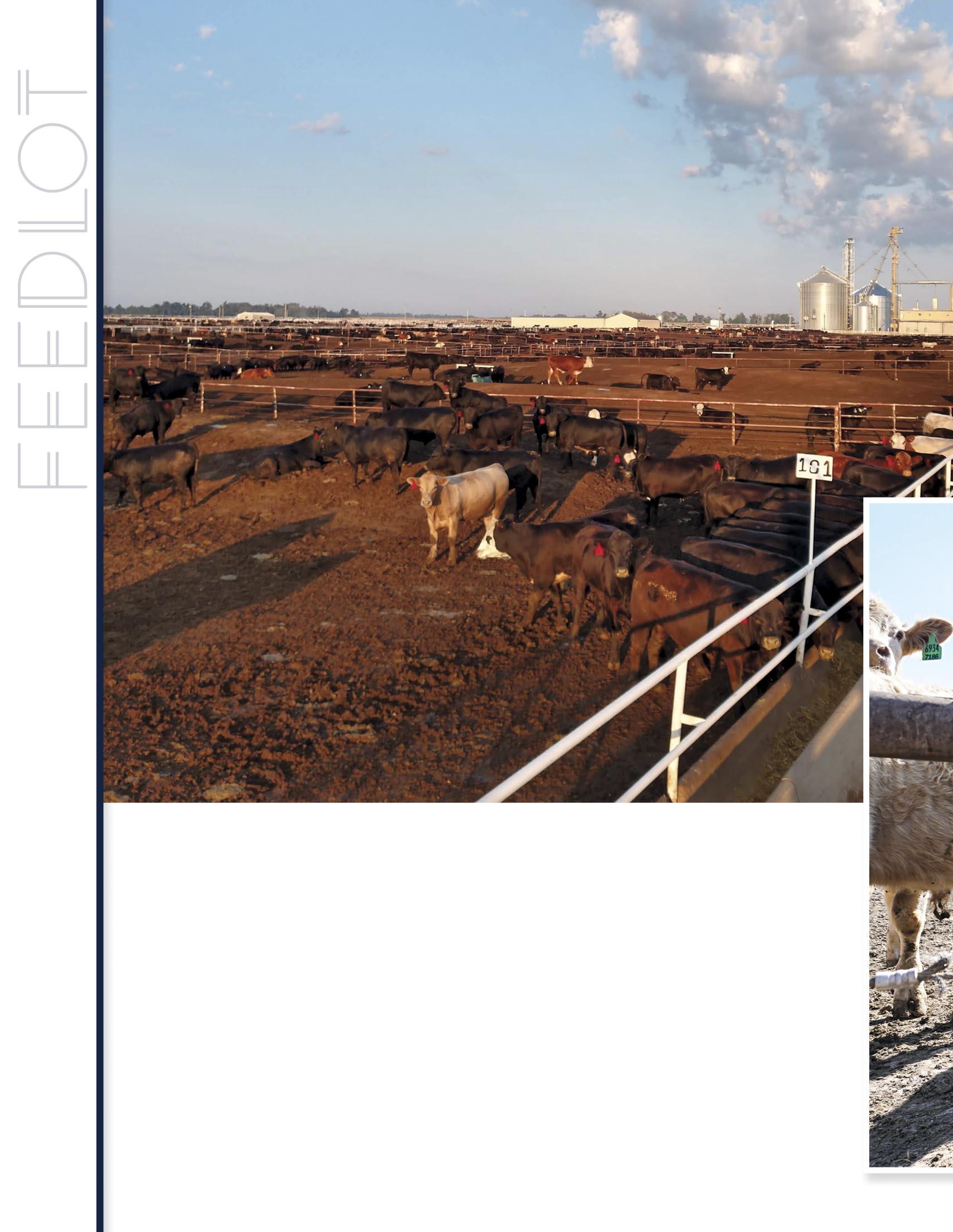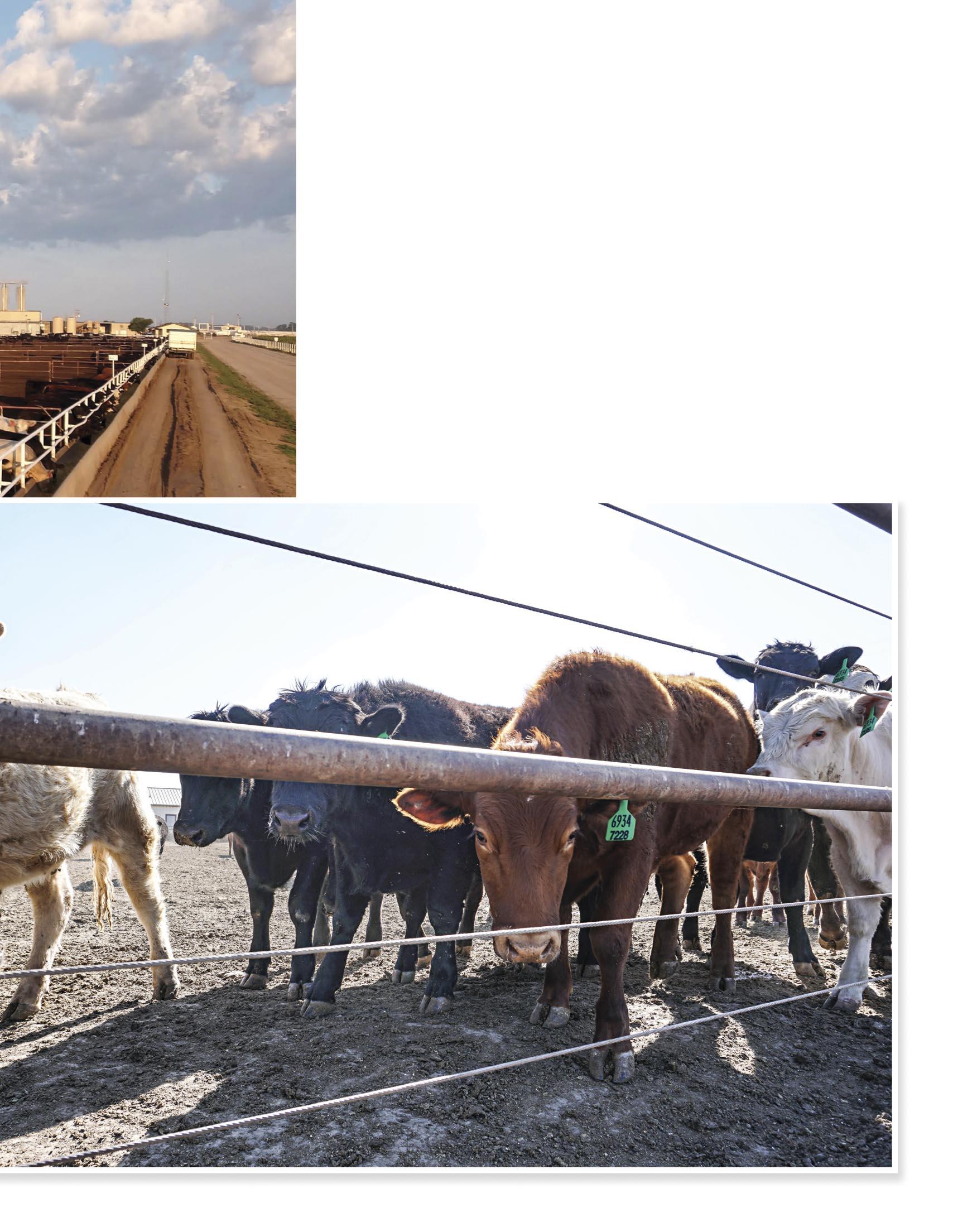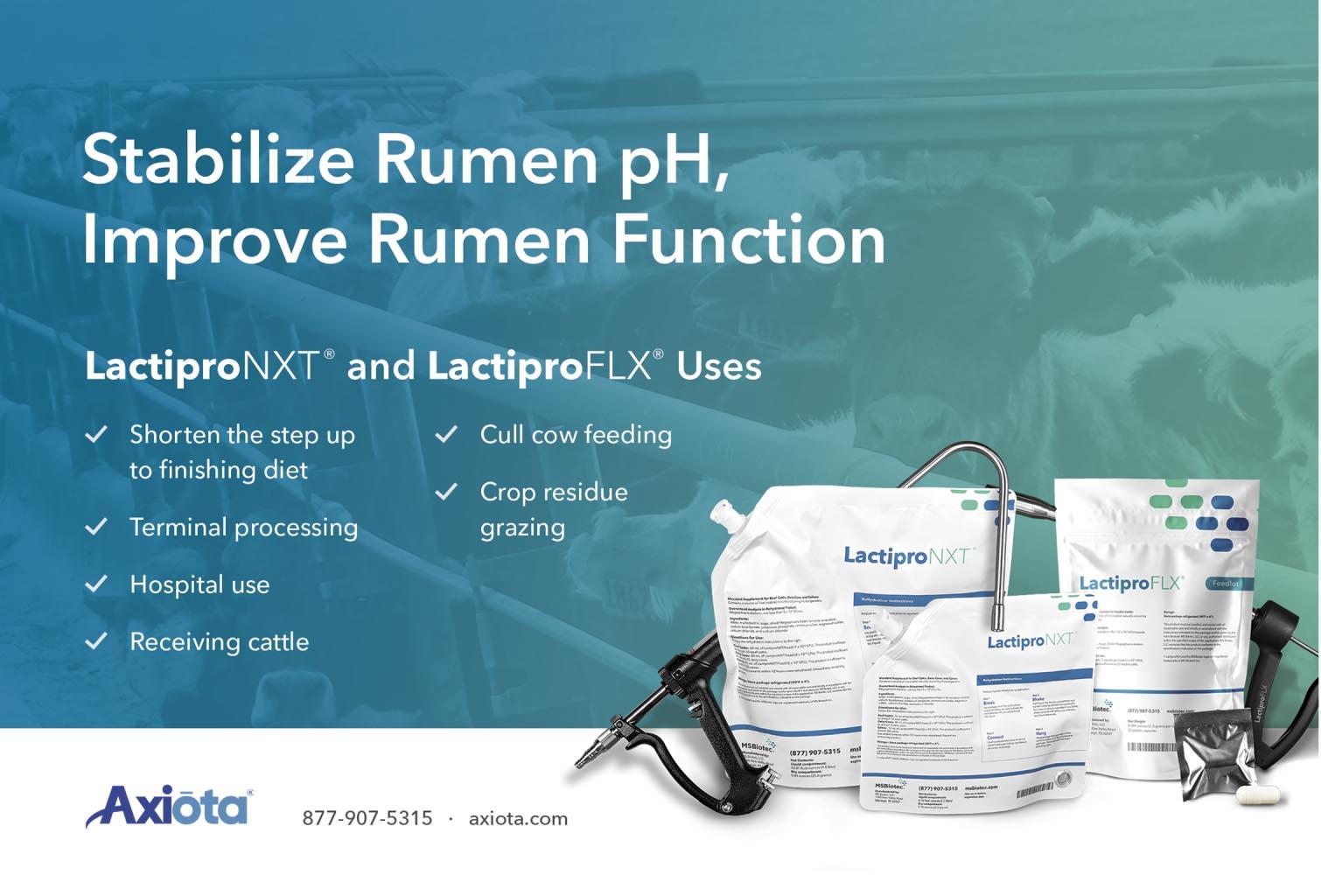
4 minute read
HELPING OUR ANIMALS COPE WITH THE SUMMER HEAT
By A.J. Tarpoff, DVM, MS, Kansas State University
Cattle are highly adaptable and can thrive in almost any environment on Earth. That being said, environmental stressors can heavily impact cattle health. During the summer months, heat stress is often our focus to improve cattle comfort.

There are several environmental factors that play a role in cattle comfort, including temperature, humidity, solar radiation, and windspeed. Monitoring these conditions is critical to ensure we modify our management when the environmental conditions change. Cattle physiologically handle heat very differently than most species. Their sweat capabilities are underdeveloped compared to other animals, so they are reliant on dissipating heat through their respiratory system (evaporative cooling through the moist air they breathe out) and through convection (air movement). Those systems typically do not keep up during the heat load of the day. However, cattle will accumulate heat load during the daytime hours and dissipate it rapidly during the nighttime cooling hours (it takes 4-6 hours to return cattle to regular temperature). When cattle experience heat stress, producers often observe very different behavior in their animals. Common behaviors are reduced feed intake, increased time standing, crowding water tanks, increased breathing rate (panting), and shade seeking movements (when shade is not available, cattle tend to bunch into groups to “shade” each other).
Heat stress mitigation strategies are implemented to increase cattle comfort during these stressful times. Every operation will implement strategies differently due to their unique cattle housing situation.
Not all animals within a group will be impacted the same way during heat stress events. Some individual factors that contribute to animals’ ability to manage heat may be hair coat (summer vs. winter), hair color (dark vs. light), breeding, or even previous health issues. Cattle that had pneumonia earlier in the feeding period may be more susceptible to heat stress later in the feeding period.
Strategies to mitigate heat stress are usually centered around management, water, environment, and nutrition. Minimizing cattle handling is very important during periods of heat stress. Weighing, processing, sampling, and shipping cattle are all necessary tasks, but during periods of heat, they should be strategically conducted during the very early morning hours to ensure cattle comfort. The daily water needs of cattle roughly double as the ambient temperature increases from 70°F to 90°F. When the year’s first heat episodes occur, it is very important to ensure that automatic water tanks have been adjusted to maximum capacity as many have separate winter and summer capacity levels. Producers may also choose to increase water tank capacity during heat stress events. Some of these practices include adding additional water tanks, filling extra water tanks on a daily basis, or in extreme heat stress events, using sandbags to section off a portion of the feed bunk to fill with water.
Nutritionally, we manage cattle to the best of our ability to minimize heat of fermentation while ensuring adequate intake. Total mixed rations that are delivered to cattle in feedlots and backgrounder facilities are usually easily digested rations that minimize the heat of fermentation. As an example, poor quality grass hay produces a lot of heat from digestion in cattle due to its fibrous composition compared to corn and corn co-products. During heat events, cattle usually consume less. It is at these times of heat stress that our nutritionists and farm managers change feeding strategies to ensure that cattle do not binge feed when the weather cools off and to reduce the likelihood of a digestive upset.
Environmental heat mitigation has many options. Constructing pens with mounds in the center of the pen that allow cattle to access breezes that may be blocked at the regular pen level is one method. Simple chores like cutting weeds on fence lines and moving haystacks to increase air flow pay dividends to cattle comfort. Sprinkler systems can also be utilized in overnight hours to cool the pen floor before the heat of the next day. Unless cattle are completely soaked to the skin, they should not be used during daytime hours for risk of increasing humidity. Bare dirt can absorb a tremendous amount of heat during the heat of the day, reaching temperatures up to 140°F. Wheat straw or corn stalk bedding sprinkled over the pen floor can reflect solar radiation and does not absorb the heat like bare ground. Bedding can reduce the temperature of the pen floor by about 25°F.
Appropriate shade can be utilized in some situations, assuming they are constructed correctly so they do not block the important breezes that cool cattle while still reducing the solar radiation that is absorbed by the ground. Many questions, such as return on investment, cattle performance, and type of animal to use them with, surround shade utilization in the cattle industry. To begin addressing these questions and concerns, our research group at Kansas State University conducted a two-year backgrounding study at the KSU Beef Stocker Unit to evaluate use of shade as well as feeding strategy (limit feeding a high energy, low starch diet vs. full fed high forage diet). Backgrounding cattle were chosen because very little research is available on the effect of shade on newly arrived calves. The study was conducted utilizing 40 pens of cattle each year for a 90-day growing period during the summer months. Our consistent significant findings showed that shade, regardless of feeding practice, improves average daily gain by 7%, increases feed intake by 6%, improves feed efficiency by 4%, and improves cattle comfort (as measured by panting scores). On top of these findings, animals provided shade reduced their water usage (consumption) by 11%. Changing feeding practices to a more easily digestible ration also reduced water usage as well as increased cattle comfort.
A.J. Tarpoff was born and raised in Edwardsville, Illinois. A.J.'s family owned and operated a beef processing plant and a steakhouse. He received his B.S. in Animal Science at Kansas State University in 2010. In 2012, he received his D.V.M. and M.S. in Biomedical Science at Kansas State University. He spent four years in feedlot production practice before returning to his alma mater to serve as the Beef Extension Veterinarian in Kansas.
A.J. has a 70% extension, 20% research, and 10% teaching appointment. He works closely with producers, practicing veterinarians, and members of industry to bring relevant extension and education that improves cattle health and the productivity of the beef industry.


Managing cattle through heat stress episodes should be a multiprong approach. Prepare now for your operation-specific response. Monitor weather conditions closely and be prepared to implement your plan when heat stress levels are forecasted to occur for three or more days with minimal nighttime cooling. This article has been translated to Spanish on page 54.










